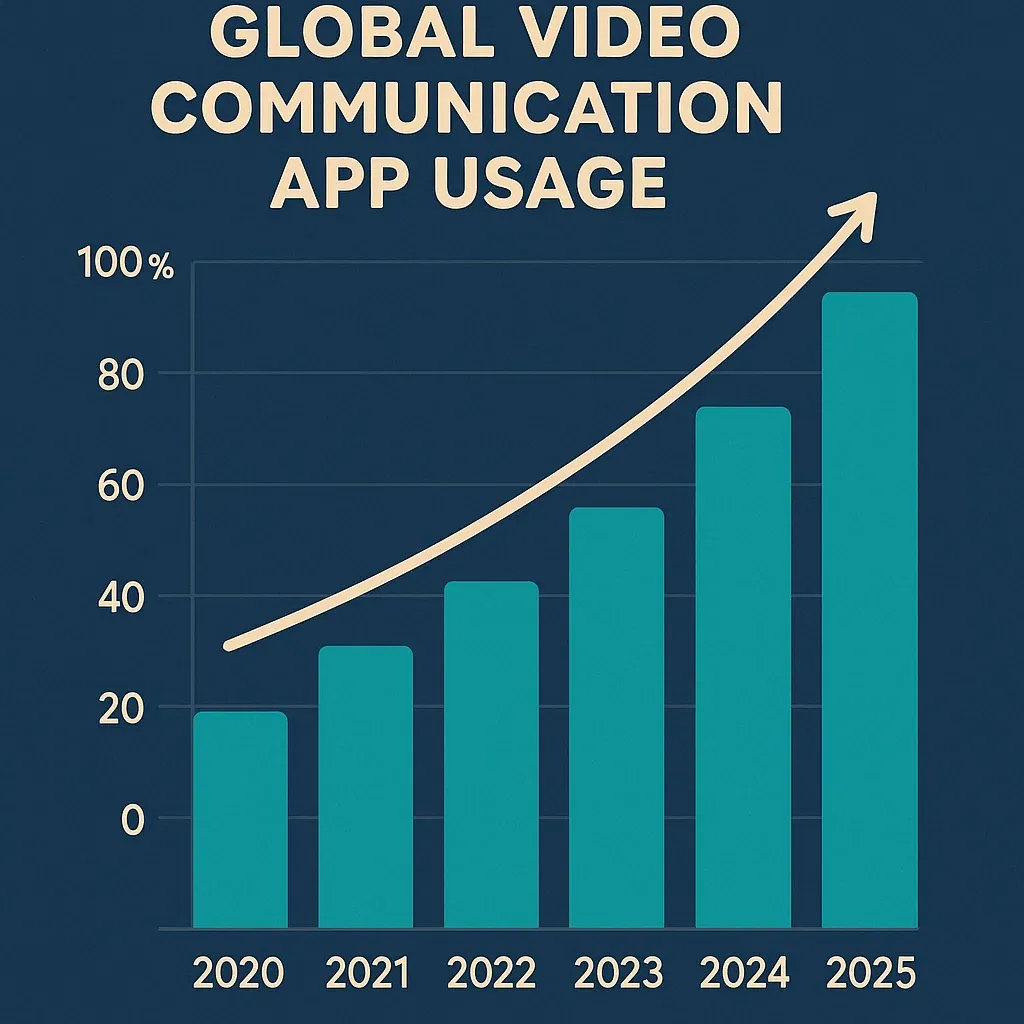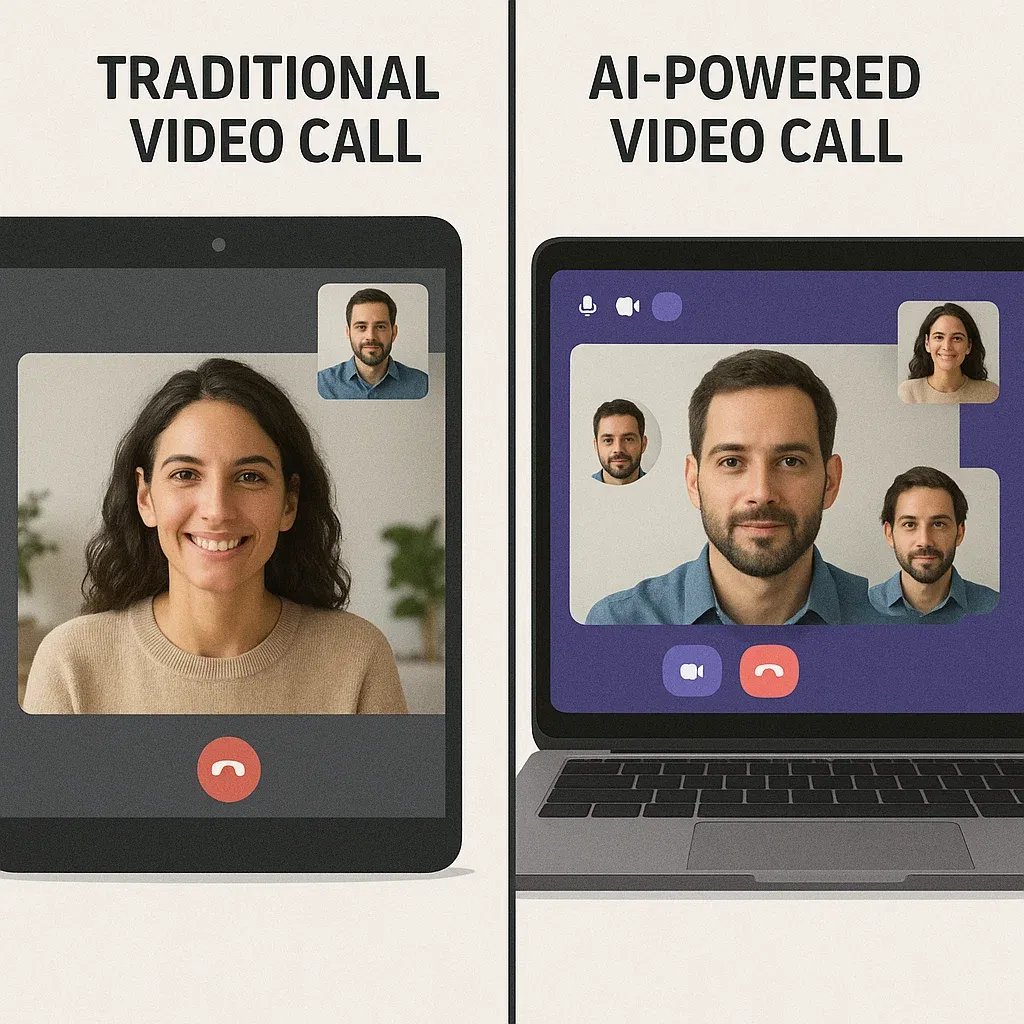The way we connect, collaborate, and communicate has permanently changed. Video calling apps are no longer just a convenient add-on — they are now mission-critical for work, education, healthcare, and social interaction. As we step into 2025, the demand for seamless, secure, and feature-rich video communication tools is surging, opening up massive opportunities for startups and entrepreneurs ready to ride the wave.
In this blog, we’ll dive into why video calling apps are one of the most profitable app categories for 2025. We’ll explore industry trends, break down high-potential app startup ideas, and help you understand what makes an app truly profitable in this space. Most importantly, we’ll show you how clone app development from Miracuves can give you a fast, cost-effective edge in launching your own platform.

Read more: The Ultimate Guide to Building VoIP and Video Calling Apps
Why Video Calling Apps Are a Hot Opportunity in 2025
Video communication has seen unprecedented growth since the pandemic — and it hasn’t slowed down. According to Statista, the global video conferencing market is expected to reach $19.1 billion by 2025, driven by the normalization of hybrid work, telehealth, and digital learning. CB Insights further highlights how funding in remote communication startups has consistently ranked among the top five tech categories in the last two years.
Add to this the rise of AI-enabled features (like real-time translation and facial recognition), low-code tech stacks, and 5G-powered seamless streams, and you have a recipe for innovation at scale. However, gaps still exist — particularly around niche-specific platforms, privacy-first solutions, and tools tailored for non-enterprise use cases.

Top Profitable Video Calling App Ideas to Launch in 2025
1. Virtual Therapy Video Call Platform
A secure, HIPAA-compliant video calling platform built specifically for therapists and mental health professionals. It enables confidential sessions, appointment scheduling, and seamless communication between patients and providers. Ideal for the growing telehealth segment in 2025.
- Monetization Strategy: Subscription-based pricing for therapists; session-based fees for patients.
- Why It Works in 2025: Increased demand for accessible mental health care and growing user preference for remote consultations.
2. Corporate Meeting Suite for SMEs
An enterprise-ready video conferencing suite tailored for small and mid-sized businesses. It includes team collaboration features like screen sharing, file access, and task management — at a more affordable price than large-scale tools like Zoom or Teams.
- Monetization Strategy: Tiered SaaS plans based on team size and feature access.
- Why It Works in 2025: SMEs need cost-effective alternatives to major players like Zoom and Microsoft Teams.
3. Online Learning Video Call App
A robust video call platform built for online educators and trainers, featuring whiteboards, quizzes, screen sharing, and session recordings. Perfect for the booming e-learning economy and a great tool for interactive remote classrooms.
- Monetization Strategy: Freemium with add-ons for educators; commissions on paid courses.
- Why It Works in 2025: The global e-learning market is projected to surpass $400B by 2026, and interactive video tools are central to delivery.
4. Video Dating App
A video-first dating platform that emphasizes real-time interaction to foster authentic relationships. Instead of endless texting, users can connect face-to-face through in-app video calls, encouraging deeper and faster connections.
- Monetization Strategy: Freemium with paid boosts, gifts, and premium filters.
- Why It Works in 2025: Users seek authenticity and real connection in online dating, which video delivers better than text.
5. Doctor-on-Demand Video Calling App
This telemedicine app allows patients to consult licensed doctors via secure video calls. Clinics and solo practitioners can use it to offer virtual care, streamline patient intake, and deliver services to remote locations with ease.
- Monetization Strategy: Pay-per-call model; enterprise plans for clinics.
- Why It Works in 2025: Post-pandemic, virtual healthcare is mainstream and growing, especially in rural and underserved areas.
6. Event Networking Video App
A smart networking tool for virtual and hybrid events, offering breakout rooms, one-on-one video chats, and intelligent matchmaking. Built for event organizers who want attendees to form real connections, not just attend talks.
- Monetization Strategy: Licensing for event organizers; branded experiences.
- Why It Works in 2025: Virtual and hybrid events are here to stay, but most tools don’t prioritize attendee interaction.
7. Video Support App for E-commerce
A live video helpdesk solution that enables online store customers to get real-time, face-to-face support. Customers can visually demonstrate issues, while support agents provide guided assistance — reducing return rates and boosting satisfaction. Perfect for brands embracing conversational commerce in 2025.
- Monetization Strategy: Monthly subscription for e-commerce stores.
- Why It Works in 2025: The rise of conversational commerce makes real-time, humanized support a competitive differentiator.
What Makes an App Profitable in the Video Calling Niche?
The most profitable video calling apps share a few core traits:
- Recurring Revenue Models: Subscription tiers or usage-based pricing brings stability.
- High User Retention: Utility-based tools that solve real needs keep users coming back.
- Scalability: Cloud-native infrastructure and API integrations make growth sustainable.
- Low Overhead: No physical assets needed, and clone-based platforms reduce dev cycles.
Choosing clone app development with a provider like Miracuves enables entrepreneurs to bypass expensive from-scratch development. Instead, you launch faster with a white-label video calling solution that’s fully customizable to your niche.
Cost to Build a Video Calling App in 2025
Building a video calling app in 2025 can cost anywhere from $15,000 to $120,000, depending on the app’s complexity, feature set, and customization needs. A simple MVP with basic 1:1 calling and login features may start at the lower end, while a full-featured platform with group calls, chat, end-to-end encryption, file sharing, and AI-powered tools will push the budget higher.
Key factors that influence the cost include:
- Platform Type: Android, iOS, Web, or cross-platform development
- Backend Infrastructure: Real-time data sync, video streaming servers (e.g., WebRTC, Agora)
- UI/UX Complexity: Minimalist vs. feature-rich interfaces
- Third-party Integrations: Calendars, CRMs, payment gateways, etc.
- Security & Compliance: Especially for healthcare or enterprise apps
For founders looking to optimize costs and timelines, white-label video call app clones from Miracuves offer an unbeatable edge. Clone app development cuts your time-to-market in half and ensures proven UX patterns, reducing risk and saving development dollars.
What Makes an App Profitable in the Video Calling Niche?
Profitability in this niche isn’t just about launching — it’s about sustaining. The best-performing video calling apps typically share the following traits:
- Recurring Revenue: Through subscriptions, licenses, or per-minute billing
- High Retention Rates: Thanks to real utility (education, work, therapy, etc.)
- Scalable Infrastructure: Cloud-native and API-first approaches enable seamless growth
- Engaging UX: Clean, intuitive interfaces keep users coming back
- Low Overhead: No physical inventory, minimal staffing with automation
And most importantly — speed of execution. With clone-based app development, founders can go live quickly, validate early, and adapt fast — essential ingredients for profitability in fast-moving digital markets.
Tips for Founders to Launch a Successful Video Calling App
Launching a profitable app goes beyond writing code. Here are five founder-focused strategies to ensure long-term success:
- Build an MVP First: Focus on 2–3 core features to solve one big user pain point. Scale after validation.
- Invest in UI/UX: In a crowded market, design is often the key differentiator. Make every click count.
- Validate Before Scaling: Use surveys, landing pages, or beta access to gather feedback before heavy investment.
- Prioritize Scalable Backend: Use cloud infrastructure that grows with your user base.
- Post-launch Marketing Matters: Plan for SEO, influencer outreach, and referral campaigns even before going live.
Read more: How to Market a Video Calling Platform Successfully After Launch
Conclusion
If you’re looking for the most profitable video calling apps to launch in 2025, the timing couldn’t be better. From virtual therapy to B2B conferencing, niche opportunities are wide open — and consumer demand is only rising. With the right monetization strategy, standout UX, and scalable tech, launching a successful video calling platform is well within reach.
And you don’t have to start from scratch. Ready to launch your own video calling app?
Miracuves offers scalable, white-label clone solutions to help you go live faster and smarter. Get in touch today and transform your idea into a profitable, high-performance app in weeks — not months.
At Miracuves, we help innovators launch high-performance app clones that are fast, scalable, and monetization-ready. Ready to turn your idea into reality? Let’s build together.
FAQs
Q:1 How much does it cost to build a video calling app?
A basic app can cost $15,000–$30,000; full-featured versions may go up to $120,000 or more depending on features.
Q:2 What features should a successful video calling app include?
Must-haves include HD video, group calls, chat, file sharing, screen sharing, and strong security.
Q:3 Is it better to build from scratch or use a clone solution?
Clone solutions are faster, more affordable, and easier to customize — ideal for startups with limited resources.
Q:4 How long does it take to launch a video calling app?
From-scratch development may take 6–9 months; clone-based platforms from Miracuves can be live in under 60 days.
Q:5 What niches are most profitable for video calling apps?
Telehealth, education, corporate tools, and dating apps top the list due to ongoing demand.
Q:6 Can video calling apps scale globally?
Yes — with cloud-based infrastructure and multi-language support, they can easily serve global audiences.
Related Articles:
- How to Build an App Like Zoom: A Developer’s Guide
- Skype Features List: Why It Still Matters in a Zoom-Obsessed World
- Skype App Marketing Strategy: How to Stay Relevant in a Zoom-Dominated World
- The Ultimate Guide to Building VoIP and Video Calling Apps
- Revenue Model for Video Calling Apps: How These Apps Actually Make Money








